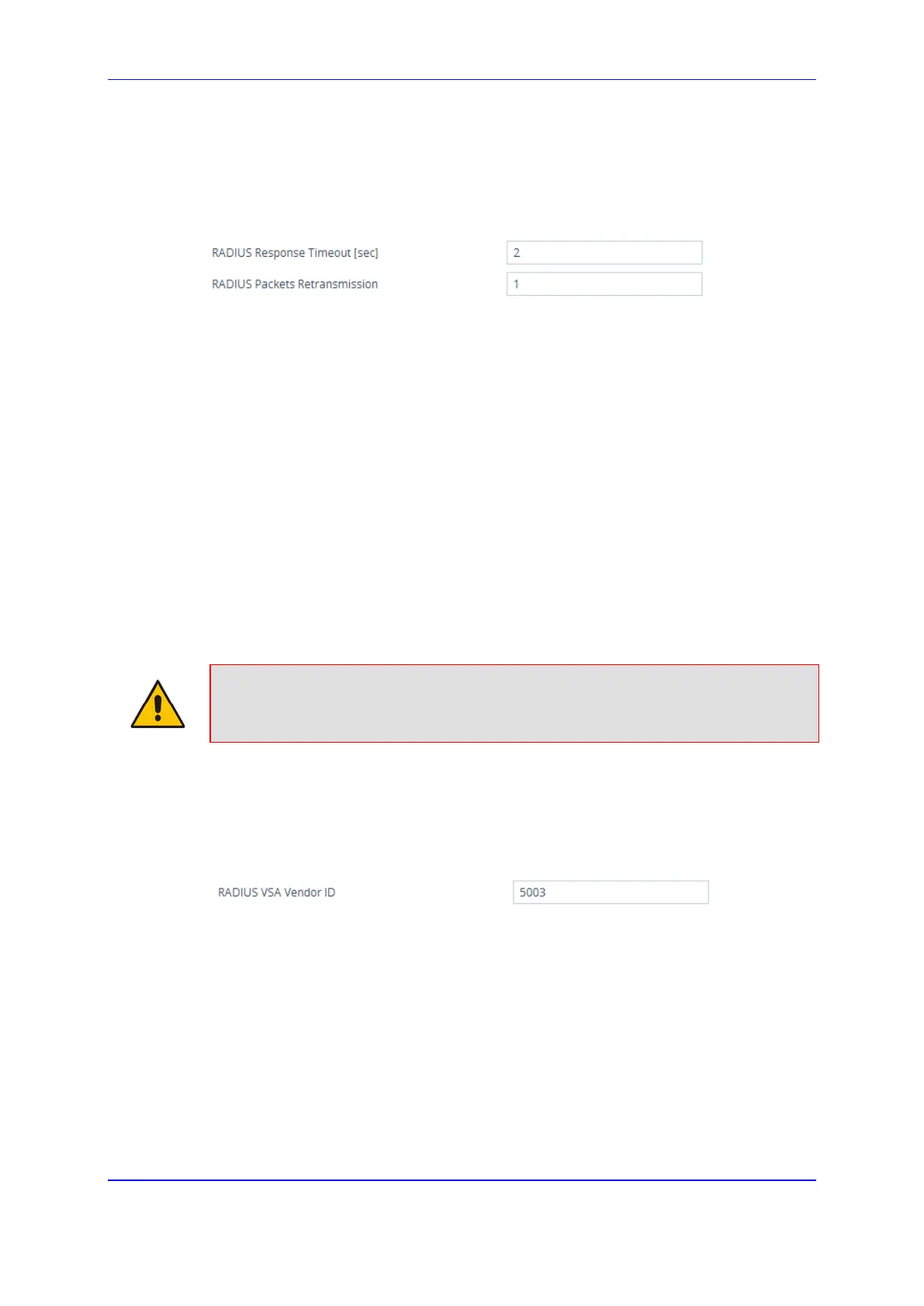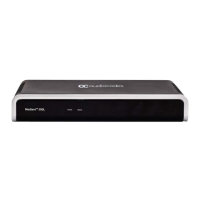Version 7.2 225 Mediant 1000B Gateway & E-SBC
User's Manual 15. Services
To configure RADIUS packet retransmission:
1. Open the Authentication Server page (Setup menu > Administration tab > Web &
CLI folder > Authentication Server).
Figure 15-8: Configuring RADIUS Packet Retransmission
2. Under the RADIUS group, do the following:
a. In the 'RADIUS Packets Retransmission' field (RADIUSRetransmission), enter
the maximum number of RADIUS retransmissions that the device performs if no
response is received from the RADIUS server.
b. In the 'RADIUS Response Time Out' field (RadiusTO), enter the interval (in
seconds) that the device waits for a response before sending a RADIUS
retransmission.
3. Click Apply.
15.2.5 Configuring the RADIUS Vendor ID
The vendor-specific attribute (VSA) identifies the device to the RADIUS server using the
Vendor ID (as registered with the Internet Assigned Numbers Authority or IANA). The
device's default vendor ID is 5003 which can be changed, as described in the following
procedure. For an example of using the Vendor ID, see ''Setting Up a Third-Party RADIUS
Server'' on page 226. The procedure is applicable to both RADIUS-based user
authentication and RADIUS-based accounting.
Note: The Vendor ID must be the same as the Vendor ID set on the third-party
RADIUS server. See the example for setting up a third-
''Setting Up a Third-Party RADIUS Server'' on page 226.
To configure the RADIUS Vendor ID:
1. Open the Authentication Server page (Setup menu > Administration tab > Web &
CLI folder > Authentication Server).
Figure 15-9: Configuring RADIUS Vendor ID
2. Under the RADIUS group, in the 'RADIUS VSA Vendor ID' field, enter the same
vendor ID number as set on the third-party RADIUS server.
3. Click Apply.
15.2.6 RADIUS-based Management User Authentication
You can enhance security for your device by implementing Remote Authentication Dial-In
User Service (RADIUS - RFC 2865) for authenticating multiple management user accounts
of the device’s embedded Web and Telnet (CLI) servers. Thus, RADIUS also prevents
unauthorized access to your device.
When RADIUS authentication is not used, the user's login username and password are
locally authenticated by the device using the Local Users table (see ''Configuring

